On my last post about running an Improv game, Toldain asked if I could share my setup for Improv games. Since I run a lot of convention games, I thought the best way to share the setup would be to do a photo filled post showing exactly what is in my setup.
It all starts with a box . . .
THE BOX
I usually carry a courier bag to conventions, but I found it just wasn’t cutting it as far as keeping stuff organized. While looking for a good setup I stumbled across the idea of file boxes. File boxes are the perfect size for gaming books and papers. Almost anything else, if the right type is gathered, can fit inside of it. Plus, the file box has another benefit.
FOLDERS
Yup, folders. They make it awesome and easy to keep things organized in the box. You can pull a folder out, find what you need, then put it back in. I’m going to go through the rest of the physical contents by their individual folders.
Folder #1 is all about the essentials. I keep bags of dice and boxes, if they are thin enough, in this folder. I keep them with enough to run in most systems. A couple of sets of d10s, a couple of full polyhedral sets, and a big bag of d6s, including some fudge dice. I also keep a little pencil bag full of pencils and markers, especially dry erase markers. They fit nicely in the folder and don’t just fly around when I’m carrying the box.
Paper and Notes
This might actually be the MOST IMPORTANT thing in my improv box. I keep at least one spiral bound notebook for taking notes while running the game and I also keep a bunch of sheets of scrap paper that I can use. I can write down initiative order, make nametags, draw quick things out that I can’t describe adequately, make maps if I don’t have anything else, keep whatever notes don’t fit into stat blocks, etc.
Cheat Sheets

Ok, this one is a little specific to me and the company games I usually run. I try to apply the concept to any game though. If possible, I try to keep a cheat sheet for any game I run. That way if the players (or I) can’t remember the basics it doesn’t require the full book. If I can’t remember the exact measurements for savage worlds gun ranges the cheat sheet will have it. If I can find the cheat sheets online, awesome! If I’m making them myself, then it is usually geared towards the game styles I run.
One big thing I try to keep in my cheat sheets folder are generic stat blocks and npc types. Some games make this easier than others, but I want one or two pages with just enough information about 4 or 5 types of enemies. That way I can reskin it on the fly. The big bruiser for a modern game can become the orc for a fantasy game or the warrior alien for a sci-fi game with a bit of tweaking.
Maps
Ok, I like maps, even if I’m not running gridded combat. Maps for an improv setup can be pretty easy, they just have to fit into the space of a file folder. Map tiles are great. Foldable maps are great. Gaming paper is great. I try to keep a few different types in here, and I switch them out when I know the types of games I’m running are changing. I just picked up a really awesome ships pack from Paizo, this saves me loads of time as ships and airships factor into a lot of my games. Specialty map tiles like this are great because the specialty maps can’t be as easily recreated through other means. Hallways, simple. Spaceship, harder. I tend to keep the map tiles in mailing envelopes that just fit the size. They aren’t hard to find and they keep the tiles nice and organized, something necessary for an on the go setup.
Character Sheets/Major NPCs
I’ve got a folder full of pregenerated characters. The ones that get most used I had laminated. I have them for a few different systems, and they serve as characters for players who don’t have characters or major NPCs if I need something more fleshed out than a cheat sheet stat block will handle.
Books
In separate folders I keep quite a few books, some are perennial and some get switched out. The Story Games Names Project book is always in there, as is the One Page Dungeon Codex, and Besm Dungeon. The Story Games Names Project book is essential to me, it is a book full of names in many many categories. E-fracking-ssential, as I’m horrible with coming up with names on the fly.
The One Page Dungeon Codex is great for “I need a dungeon quick”, and so is Besm Dungeon. They both cut it down to just the essentials to run a dungeon. You can easily reskin and use the maps as templates for quick adventures or just run off of them as written with whatever system you are running.
Shameless Self Promotion Books
Ok, I’ve got to disclaim that I’m a writer for both of these books, but they are two that are always in my gaming box. The Silvervine book is always there because it is the system I run most at conventions and, in my completely biased opinion, is very easy to run improv games with. The stat blocks I talked about earlier, yeah, stat blocks like these make it easy to run combats.
To run a really easy improvised combat, work out a generic stat block for the archetypes of enemies that exist. Dodgy, Damage Dealers, Hard to Damage, etc. They may not be 100% accurate to a specific enemy, but they’ll get you through most of what you need.
Then of course there is Eureka. If I’m stuck for a plot, I pull this open and find one based on the tags in the back. It’s incredibly easy to pull a plot out of my as….this book and just run with it. Ok, no more shameless self promotion.
The Box O’ Toys
Ok, these are my minis and other things for improv games. I keep one box, of the type you can find at craft stores for beads or fishing stores for holding lures. They hold minis incredibly well and let you section them off a bit. If you can find one like this (~$4) you get one big side compartment to hold big things. Here is what I keep in mine.
I keep a bunch of tokens, per Patrick’s Not Just a Token Gift article, which was modified from one Newbie DM did. Thanks Newbie DM! You really made my improv box with that article. The beautiful thing about these tokens is that you can do so much with them and they take up so little room. I try to have pictures that fit pregens I know I have, but I also do multiple enemies. The zombies are there because they make great mass enemies. I can stick a mini of an Orc up front and put 8 zombies behind it. I say “The zombies behind the orc are all orcs as well.” and we have minis. I can also use the tokens with the alphabet on the back and just stick those behind a mini to represent more of the same.
I try to keep minis that represent the basic hero and enemy types. Using the “more of the same” method above, they can easily be duplicated in the players minds. With a small collection, a perfect match isn’t going to be possible but a “close enough” might be. I generally find that tokens are ignored for 3D minis, but I think that is just because we gamers like our toys.
I try to keep a couple of full sized and mini sized poker chips in a compartment for whatever might come up. Full sized ones are great for denoting conditions. Mini ones are great for generic enemies or any one space thing. I also try to keep some minis that represent inanimate things. Dollhouse furniture, small statues, etc. These really help when I need to give some feeling and a bit of 3dness to the map.
Jenga Blocks, Dominoes, and doors if you can find them. These are the key to my improv maps. Buy a set of Jenga blocks and you’ve got decent walls. Find a set of wooden dominoes and you’ve got twice as many. Use them in tandem and you can build all sorts of structures. The doors here are from an old mage knight set, but an upright domino in-between Jenga blocks works perfectly. Bonus — If you have a full set of blocks you can run dread.
The Second Box!!!!!
Ok, sometimes I’ll grab a second box full of terrain and more minis. This is usually tailored towards whatever games I know I’m running, but I try to keep it around with enough to adapt. I usually use a bucket for this box, seeing as how it fits things much nicer and doesn’t need to be as organized. In this box I usually keep a more robust set of minis, as many pieces of Heroscape terrain as I can manage neatly, and a full Jenga block set. Plastic pencil boxes help me keep it organized.
The Robust Set of Minis

Without the need to generalize and conserve space, I can store more things in here. I try to tailor it to my games but there are a few general rules I follow.
 Keep one or two big minis, like Cthulu here, to represent big monsters.
Keep one or two big minis, like Cthulu here, to represent big monsters.- Keep 2 or 3 minis of the same type to represent the same types of creatures or to have one mini at the head of a group of counters that represent more of the same.
- Keep a decent group of hero minis.
- Keep counters of multiple types.
- If you can have inanimate objects, great.
- You’ll never have enough minis to represent everything, so look for good enoughs.
Ok, With All That Laid Out, You Can Get Some Pretty Decent Setups
The Terrain doesn’t need to be perfect, just representative.
Here is an example of more of the same. The stormptroopers on the tower are being represented by the 3 tokens as well as the minis.

The white tokens under the gremlins represent swimming penalties.
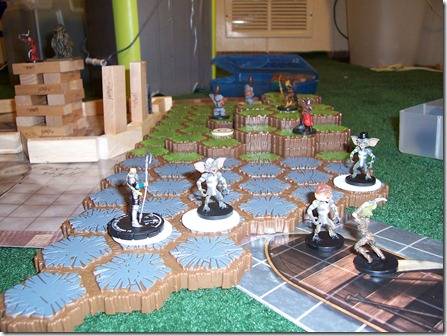
The walls don’t NEED to be built all the way around, vertical blocks and a note in dry erase on the map convey enough information.


And In The End It Fits Right Back Into Two Neat Boxes
One If You Aren’t Looking To Do An Impressive Setup For Terrain
One Piece Of Advice To Leave You With
You don’t need any of this stuff.
I focused on the physical aspects of this because these are the things that help me run improv games, but really it is mostly unnecessary. This setup helps me account for any situation with the polish of a more prepared game, and sometimes that really makes a difference, but really all you need to run an improv game is paper, pencils, and whatever system you are running in. The rest is all gravy. Some of the most fun improvised games I’ve run have been done with very little in the way of supplies. If you want one or two tools that make that possible go for blank paper and a writing instrument. With those two things anything else can be produced in some way. I’ve seen entire setups done with stick figure minis and drawn on the fly maps.
So, you’ve seen my setup. What about yours? What tools do you keep in your GMing kit for improving or otherwise? I’m always looking for, as I’m sure every other GM is, new things to keep in my GM kit. What do you find indispensible in yours?

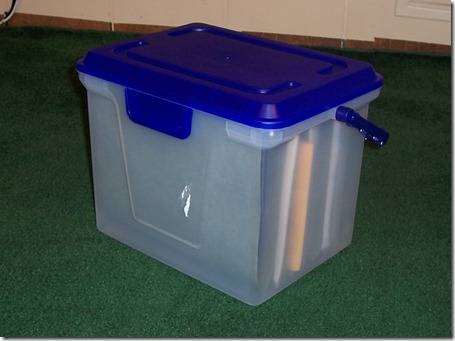
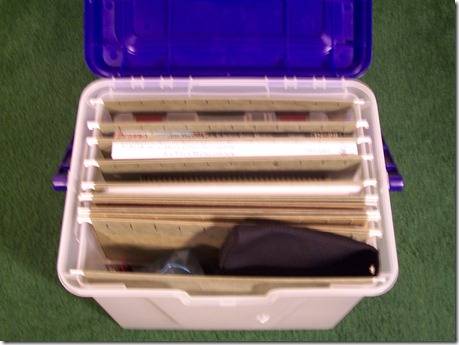

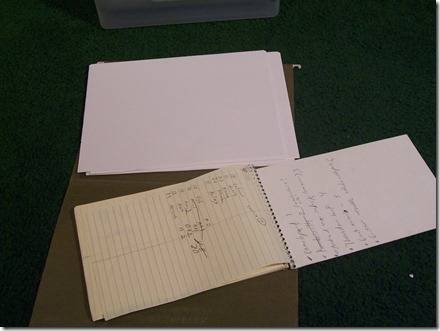


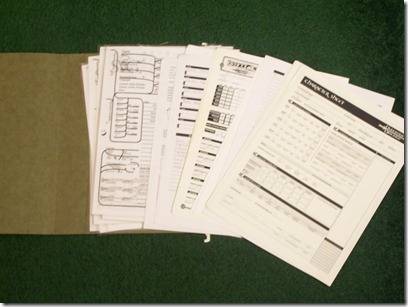

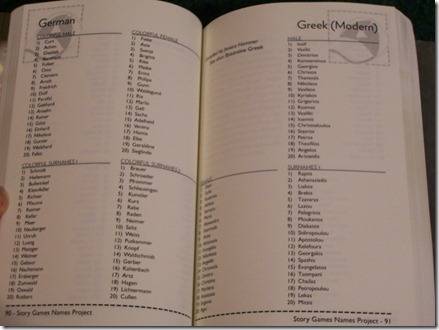











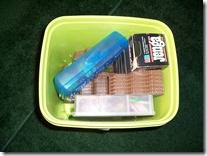

















I have only skimmed the beginning of this and snuck a look at all the pictures and I’m blown away. Beautiful work. Going to read the rest now.
I just finished reading, and this has given me a lot of ideas for (not just improv) games… I had never really considered jenga blocks as terrain before, but now they seem so obvious!
Thanks.
How much does this weigh? I know that you use a lot of lighter books (i.e. Savage Worlds, 1 page Dungeon Codex). But with the books, paper, pens, terrain, minis and other stuff does the weight get heavy?
I ran a Pathfinder Game yesterday and the books alone get the weight to be annoyingly high. Pathfinder Core, APG, Beastiary, Tome of Battle. The stuff gets heavy in a backpack, I imagine lugging around a box of this would be a nightmare.
Are there things that you found didn’t work? Things you cut for space/weight/ease of use?
So many ideas I haven’t thought of. Good stuff!
Awesome post! The pics were very helpful. I’m definitely stealing some of these ideas.
@rocketlettuce – Thanks! I hope it proved useful to you. I realized how picture heavy it was going to be somewhere close to the end. I almost feel bad for people getting the Stew in their emails.
@Ben Scerri – I prefer the dominoes for making walls, but it is hard to find the little wooden ones anymore. All the stores near me seem to carry the big ceramic ones. Carrying those is always a little trickier. I finally found some solutions that would work well (and cheap enough) for storage that they might become viable. The Jenga blocks are better for some things though, like massive structures.
@Razjah – The weight isn’t too bad and isn’t as straining as carrying a backpack. I’d say ~ 7 to 8 pounds with full books. If I ditch books then it is much less. The style of box (with the handle on the sides) was important to me because of that. I found the boxes at staples for 9.99 and they’ve carried me through a few conventions.
@Animus – I’m glad it helped! Office supplies are a GMs friend.
@brakeforguars – Thanks! I’m glad it was useful.
I’d love to hear what others have in their setups. I know there is stuff I haven’t thought of in this. Any tools anyone out there you find useful?
When I was younger and went out on the road a lot, I did something similar called my “Big Bag of Stuff.” It contained many of the things listed here. Here are a few other things I find invaluable:
-binder clips. small and medium metal clips that are great for holding things together or keeping places in books.
-tape. you’d be amazed how often tape can be McGuyvered into useful things with just a couple seconds of work.
-3×5 notecards. this goes without saying.
-a collapsable dolly or handtruck. this is especially useful once you have multiple bags or boxes in a crowded convention setting.
All around, good stuff John.
@evil – Tape is a great one. I tend to use tape to cover the Hit Point or other frequently erased areas on a sheet. With a piece of clear tape over them you can write in pencil and erase with a swipe of the finger, all without wearing through the sheet.
Don’t limit this to convention and travel usage only.
I use Akro-Mils divided organizers for miniatures storage, and two smaller for gaming supplies. One is player-specific (minis, notes, tokens, etc), and the other GM-specific (critter cards, Bennies, area effect templates, dice, etc).
Fantastic, John. Thanks very much.
You said, “all you need to run an improv game is paper, pencils, and whatever system you are running in.” I’m with you there, some of the most fun games I can remember from 30 years ago were like that. We didn’t even really use a system.
But that’s not the point of my question or your article, is it?
I take it you stick to the same power level, which means the task of reskinning your npc enemies is much easier than if you say, had to change them from 5th to 25th level (in D&D terms).
Of course, the stock characters are good, too. I am known to use a certain red-headed high elf across many different worlds, I think that’s what’s going on here, right?
Also appreciated are the many details of how to store all this stuff and how to use tokens. Thanks again!
Have you gone through many boxes? You said that these have gotten you through a few conventions? Do the boxes have a life expectancy that you have encountered?
Are there certain systems you advise against when making a “travel bag/box/bucket?
I would assume the systems with many hardcover books would not be the best.
Awesomesauce times 5,000, John!
@Kurt “Telas” Schneider – That Akro Mils stuff looks nice. Do they sell through any stores or just through their catalogs? I’m always looking for boxes that accommodate just a little different sized stuff while still fitting inside the big carrying box.
@Toldain – Glad you like it. As far as power levels, I try to setup cheat sheet NPCs with diverse power levels. So I might stat out an acrobatic character in SW at a low level and then do the same one at two levels higher, etc. I tend to fudge the stats when I set up the combats in order to represent the challenge I want. Once they are set (pre combat or encounter) I generally stick to them.
@Razjah – I’ve actually got 4 boxes like the main box. They’ve never worn down on me and are pretty sturdy. I just keep different things int them. One is strictly for minis, one is for straight character creation sessions in a single system, another is for different systems, etc. It all depends on what I need for a convention. When I’m going with my company I’ll usually do 2 game boxes and 2 character creation boxes.
Book heavy systems can definitely cause issues with any kind of portability setup. I’d probably get the couple of key books I NEED and put those in a separate box or bucket. At most I want to carry two of these around ANY convention. For book heavy systems I really recommend the cheat sheet option. Try to compile as many rules/options as necessary into a couple of pages without all the fluff. Then of course there is the ultimate portability tool – the netbook. If you’ve got one they will fit beautifully inside of a folder as well.
@Martin Ralya – Thanks!
Do you use props in these improv game? They tend to be space takers unless scaled them down.
Is there anything else you would recommend to use for transporting rpg stuff? I think it would be great to have an article discuss ways to transport rpg stuff. Comparing backbakcs and briefcases to buckets to duffel bags to other methods not normmaly thought of.
Actually, I’m off to the suggestion pot now…